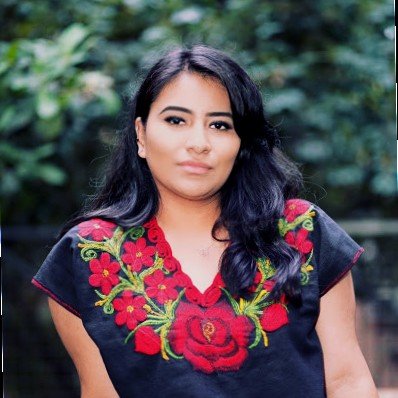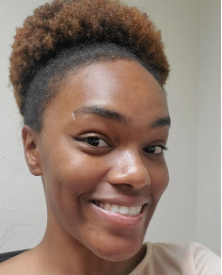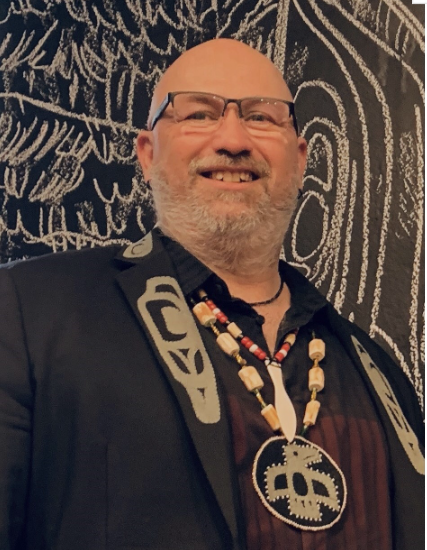Bre Urness-Straight
Director of Educational Technology, Office of Superintendent of Public Instruction (OSPI)
Interview by Amanda Ong & Xuan Bui
November 17, 2022
This interview of Bre Urness-Straight was conducted by Amanda Ong and assisted by Xuan Bui. We covered what her motivations and passions are regarding digital equity, as well as her values and important successes. Bre shined the light on her work in Equitable Access and how that term has increased inclusivity in her advocacy.
Q. What is your definition of Digital Equity, and what about it motivates you? What are you passionate about in this space?
BUS: For me, digital equity is when every learner has the information, support, and skills to have equitable access to affordable, reliable, high-speed internet; adequate internet and able devices; digital literacy and training; quality technical support and evidence-based applications; and content design to facilitate self-sufficient and collaborative learning.
Digital equity is a very real and personal issue for our K-12 students and families. Equity access means both engaged student learning and whole family access to learning. It supports opportunities to be civically engaged and the ability to access virtual healthcare and personal wellness. I am very passionate about this space because I have seen the impacts and the differences that equity of access has made. I’ve also seen the gaps and the impacts of those gaps, and the very real impacts of the things I’ve listed. It’s not just our K-12 students, but whole families. Knowing what those [access] differences are really what drives me around the issue of access. I talk about equity of access more broadly than digital equity because equity access really speaks to all of the tools , whether or not they’re digital, including collaborative coaching, learning, or community-based organizations and helping with digital navigation. All of those are equity of access that improve opportunities for our students and families.
Q. What values and/or principles are important for everyone in this space to do good work?
BUS: One of the things that I’ve taken away from my diversity, equity, and inclusion work is that I can only speak from my own personal experience and advocate from an understanding of how equity of access has impacted my own life, and that it is vital to be respectful of other peoples’ lived experiences. So, coming to this work with a listening ear and understanding that our lived experiences are not everyone's experience, and then creating a space that’s safe to have those conversations.
Q. What have been big wins for you and how did they happen? What sorts of support were needed for them?
BUS: This is a long one, since we’ve been really busy. Since the passing of the House Bill 1365, OSBI’s digital equity, inclusion, grants, and staffing were funded through fiscal year 2023. As we’ve developed these grants to districts, we focused on and implemented equity of access. This included considering the needs of districts that had not historically applied for ed-tech grants and providing personalized tech support to small and rural districts, including a grant consultant. Encouragingly, 55% of the grant application awards went to rural districts to support on-to-one device and inclusionary initiatives, technology support, and coaching.
The OSBI’s ed-tech team is building strong relationships to support and advocate for K-12 school districts. We wouldn’t have a team without funding or partnership with Washington State. We’ve been really working on building cross-agency partnerships and having conversations with entities such as with the Broadband Office.
Additionally, the Federal Government provided districts with funding to support digital equity inclusion through the Emergency Connectivity Fund. With focus on equity access, OSBI funded support for an ECF coordinator, and as a result, 72.5% of Washington State school districts applied for funding. $110 million has been funded to date with reimbursement of $59.7 million to districts in Washington State. Without that critical federal funding we would not have had the resources needed to do this work. It is unclear if our rural and small districts would have had such a high percentage of applications for those funds without the support of our ECF coordinator.
“….[come] to this work with a listening ear and [understand] that our lived experiences are not everyone's experience, and then [create] a space that’s safe to have those conversations. ”
Q. What is your organization’s goal in moving towards digital equity? What steps are being made by your organization to reach that vision?
BUS: I’ve been the director at OSPI’s Educational Technology department for a year and seven months, so not a long time. Our work is based on equity of access, so as we look at our work we focus on how we can increase access and support to ensure equitable access to all the initiatives we offer All our department initiatives consider how we can increase access. We ask questions about challenges and how we can remove barriers to increase equity of access. So we seek understanding through collaboration and partnerships that better inform our work’s meaning. Oftentimes, when you are working with a state entity, there are a number of steps in order to access funding; we really tried to streamline so it did not become a barrier for understaffed school districts. We really want to remove those barriers to access and funds. The same with ECF.
Q. What’s an example of some good work so far and who’s been doing it? Who would you like to give a shout-out to?
BUS: We’ve got a number of shining stars out there. When you look at the amount of funding within the State, there are just so many good things going on.
One of the ones that really shines is Hoquiam School District, which is out in the Peninsula. That district is located in a former lumber industry community that has been economically depressed. The Hoquiam School District staff have worked so hard to not only increase technology access within their district, but also to engage teachers and advocate for inclusionary practices with those technologies. I kmentioned that some of the funding was one-to-one and inclusionary practices. At the state level, the OSPI staff supported this district in a number of ways, including through support throughout the grant process, providing DEI guidance,,, extensive communication, and with the ECF application.
One of the interesting things with the DEI funds is that a state-level decision was made prior to ECF funding becoming available. When the ECF funds were made available, we were really able to dynamically increase access and support districts. As a quote from Chris Nitty, who is at Hoquiam, said “Hoquiam School District is really moving forward with educational technology. Our sonic view board rollout has been a stunning success with a 98% adoption rate.” It speaks volumes when you know the work you’re doing is directly impacting teachers and students. That’s why we do what we do, and why we’re passionate about it.






